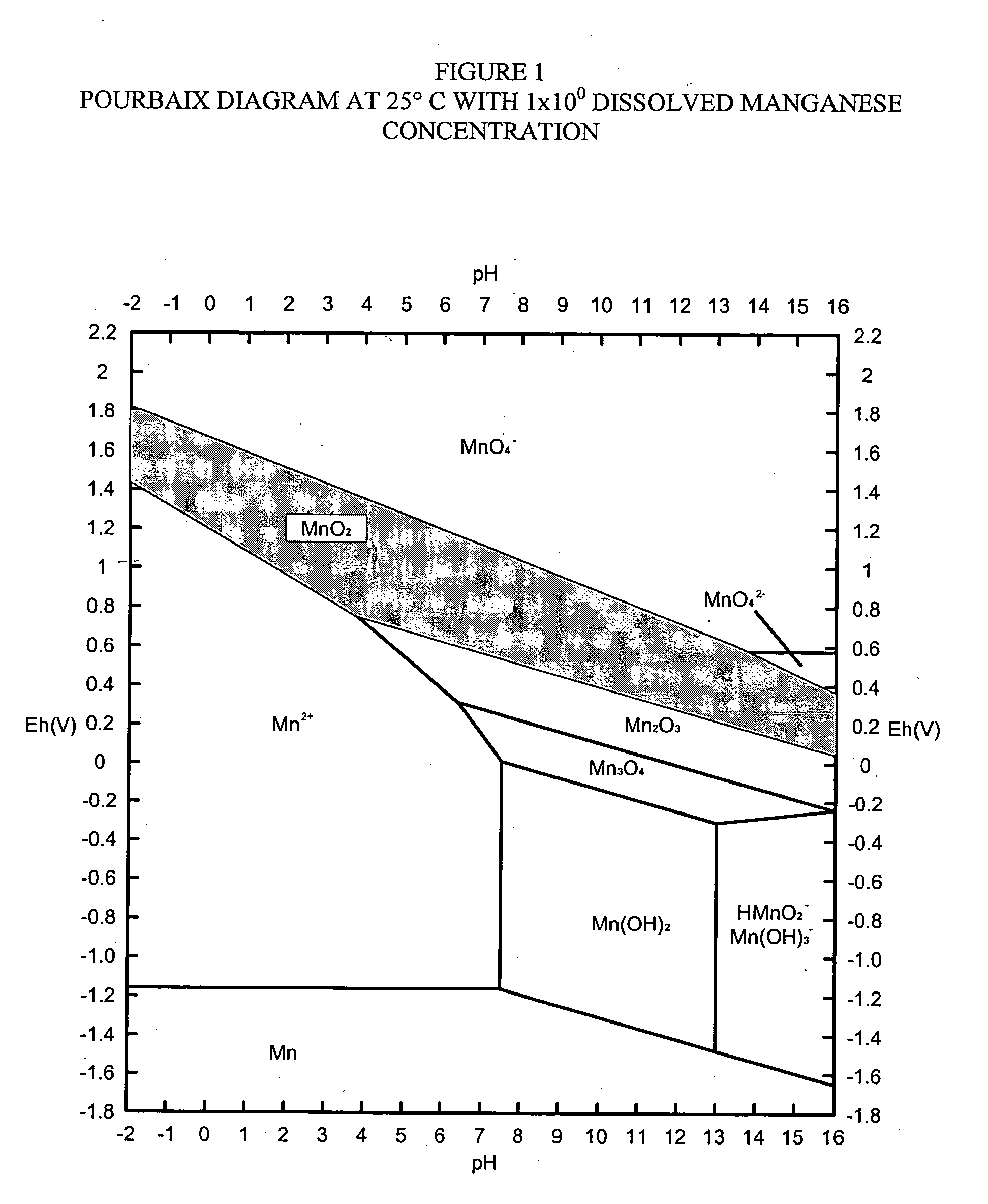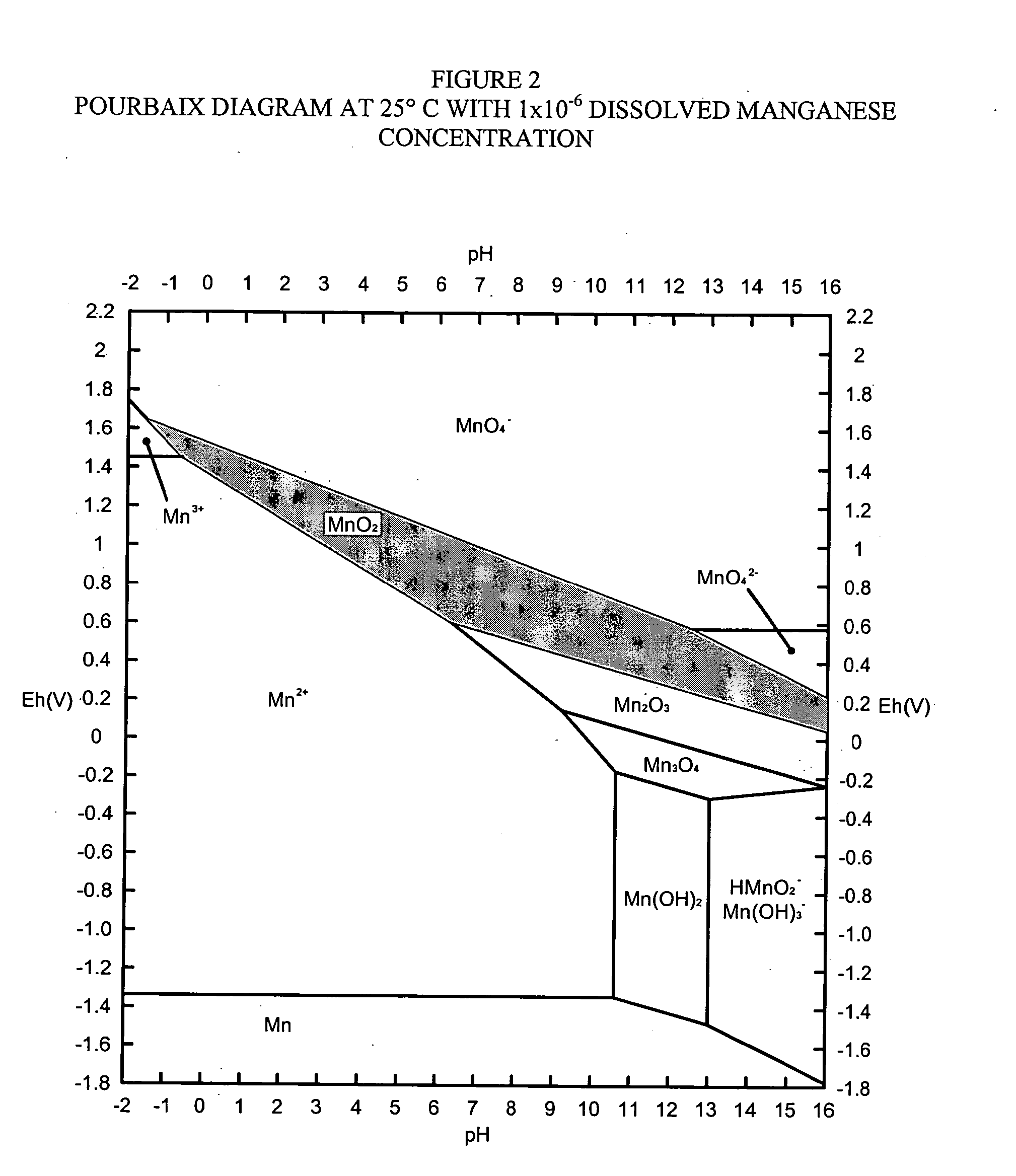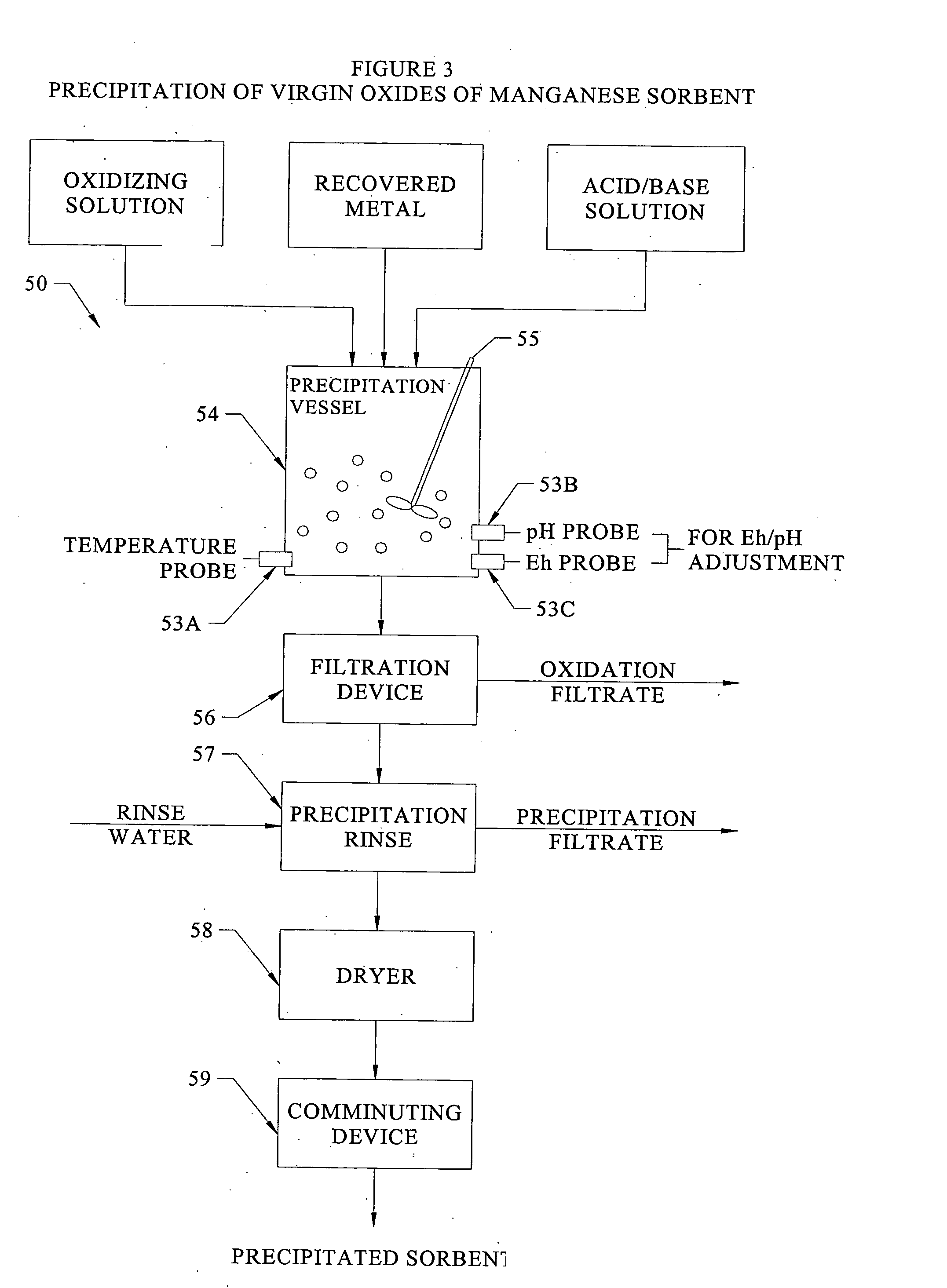Disassociation processing of metal oxides
a metal oxide and disassociation technology, applied in the field of disassociation processing of metal oxides, can solve the problems of low pollutant loading capacity, low chemical activity, and emd being somewhat inferior to cmd for gas removal applications, and achieve the effect of rapid and adaptive recovery of metal values
- Summary
- Abstract
- Description
- Claims
- Application Information
AI Technical Summary
Benefits of technology
Problems solved by technology
Method used
Image
Examples
example 1
[0087] Turning now to precipitation example 1, in the precipitation vessel, 169 grams (1 mole) of MnSO4*H2O and 750 milliliters of water were mixed and heated to 100.degree. C. In the oxidant vessel, 376 grams (1.4 moles) of K2S2O8 and 1000 milliliters of water were mixed and heated to 80.degree. C. The oxidizing solution was rapidly added to the manganese salt solution in the precipitation vessel and vigorously stirred while the solution was quickly heated to boil and maintained at not less than 100.degree. C. Immediately following addition of oxidant to the precipitation vessel, potassium hydroxide (20% KOH) was added with an adjustable-flow fluid pump for the purpose of controlling the pH of the solution at a target pH level of 1.85, within 0.02 pH units. Solution pH and Eh readings during the course of the precipitation reaction are presented in FIG. 9. The precipitation vessel was continually mixed and the temperature maintained at not less than 100.degree. C. for 45 minutes af...
example 2
[0090] In example 2, a 50 pound quantity of newly precipitated oxides of manganese sorbent was prepared. Precipitation of the 50 pound batch was conducted following the same techniques and procedures as the 100 gram precipitation outlined in example 1 and the pH and Eh values during the precipitation are illustrated in FIG. 9, with the exception being the target pH level set point and the strength of the KOH solution. In the precipitation vessel, 84.5 lbs of MnSO4*H2O and 45 gallons of water were mixed and heated to 100.degree. C. In the oxidant vessel, 188 lbs of K2S2O8 and 60 gallons of water were mixed and heated to 80.degree. C. Immediately following addition of oxidant to the precipitation vessel, potassium hydroxide (for example 2, 46% KOH) was added with an adjustable-flow fluid pump for the purpose of controlling the pH of the solution at a target pH level of 3.5, within 0.02 pH units. The remaining oxides of manganese precipitation steps were conducted exactly as with examp...
PUM
| Property | Measurement | Unit |
|---|---|---|
| temperatures | aaaaa | aaaaa |
| temperatures | aaaaa | aaaaa |
| temperatures | aaaaa | aaaaa |
Abstract
Description
Claims
Application Information
 Login to View More
Login to View More - R&D
- Intellectual Property
- Life Sciences
- Materials
- Tech Scout
- Unparalleled Data Quality
- Higher Quality Content
- 60% Fewer Hallucinations
Browse by: Latest US Patents, China's latest patents, Technical Efficacy Thesaurus, Application Domain, Technology Topic, Popular Technical Reports.
© 2025 PatSnap. All rights reserved.Legal|Privacy policy|Modern Slavery Act Transparency Statement|Sitemap|About US| Contact US: help@patsnap.com



